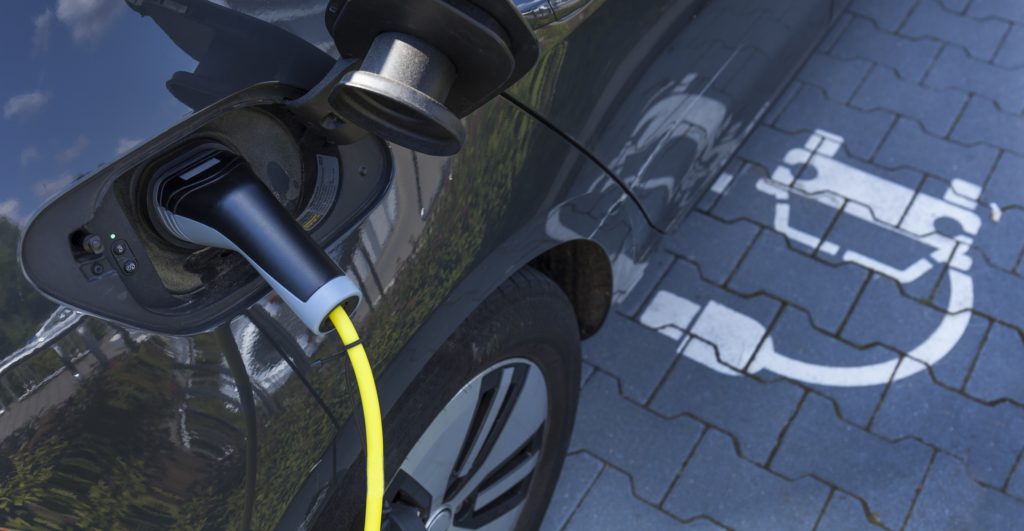Balancing COVID-19 recovery and galvanising the automotive sector
30 June 2020

30 June 2020
As coronavirus (COVID-19) recovery plans are finalised, Europe looks set to go green. Greater emphasis is being placed on developing, building and selling electric vehicles (EVs). But this technology cannot be sold into a vacuum. EVs need infrastructure not only to operate but to be seen as a viable option by consumers. Autovista Group Daily Brief journalist Tom Geggus finds out how the automotive industry is facing up to an electrified future.
Evidence of Europe’s efforts to emerge greener from COVID-19 can be found in economic packages and policy plans. The European Commission stated its €750 billion ′Next Generation EU‘ COVID-19 recovery plan must work in conjunction with the European Green Deal.
Alongside the likes of renewable energy systems and carbon capture technology, green infrastructure has been earmarked to receive funds. Executive vice-president of the Commission, Frans Timmermans drew attention to the financing of one million EV charging points, as well as clean fleet renewals and sustainable transport infrastructure.
Below what will be required
Speaking exclusively with Autovista Group in the video below, Saul Lopez, e-mobility manager for Transport and Environment, highlighted the importance of developing electric infrastructure to build consumer confidence in EVs.
In a statement to Autovista Group, a spokesperson for the European Automobile Manufacturers’ Association (ACEA) welcomed the recovery plan’s focus on EV infrastructure, saying it supports the goal of funding one million public charging stations. However, the association stressed that this objective was already part of the Green Deal and that it falls well below what will be required in reality.
′According to the Commission’s calculations, roughly 2.8 million publicly-available charging points will be needed by 2030 – some 15 times more than what is currently in place across the EU,’ ACEA said.
Alternative fuel infrastructure directive
The association points to this as a reason to urgently revise the alternative fuel infrastructure directive (AFID). ACEA claims the 2014 directive is not in line with the current trajectory of EV sales and has been suffering from poor implementation by member states. It is, therefore, calling on the Commission to accelerate plans to review AFID.
′This should revise upward the number of charging points and refuelling stations required across the EU, as well as introduce mandatory targets for national governments and enforcement measures to ensure proper implementation of the national plans,’ ACEA said.
Lopez said that AFID was ′not really fit for purpose’. This was because the period under review only stretched to 2020. Now that the revision is underway he said that about three million public chargers could be expected in the next decade. Furthermore, with the directive becoming a regulation, it will now be compulsory to develop EV infrastructure, not simply a suggestion.
The Commission also identified the construction and building sector in its recovery plan, earmarking funds for renovation schemes. ACEA believes that this ′renovation wave’ presents an ideal opportunity to integrate charging points into both public and private buildings.
Data-driven
ACEA is encouraging the Commission to improve the quality of data gathered and provided by the European Alternative Fuels Observatory (EAFO). This would allow it to become a solid and robust information point for statistics on alternative fuels infrastructure.
The association explained that most of the points currently reported by the EAFO are below 22kW, which include low-capacity power sockets in garages. The EAFO stated this type of data does not help policymakers or manufacturers, as more detailed and structured information is needed. Significant investments are needed in this area which is also critical to improving consumer trust alternatively powered vehicles ACEA said.
Additionally, there should be clear information on the power of each charging point, not just whether a point is above or below 22kW, which EAFO currently does. ′This is especially true for high-voltage and fast charging for both passenger cars and heavy-duty vehicles, and should be done in line with the definitions of the EN 17186 CEN standard’, ACEA explained.
State by state
While the Commission oversees international recovery efforts, national governments have also been drawing up plans to get the automotive industry rolling again. In Germany, for example, green mobility will see increased incentives to boost demand.
The likes of battery-electric vehicles (BEVs), plug-in hybrids (PHEVs) and fuel-cell electric vehicles will see their subsidy rates increase. Conversely, petrol- and diesel-powered vehicles do not look to benefit from the package.
′We are disappointed to note that several of the national fleet renewal schemes focus exclusively on electric vehicles, which represent a small albeit growing share of the total market,’ ACEA said. ′Given the dramatic collapse in sales over the last months, the market as a whole urgently needs a strong boost, in a way that will still reduce overall fleet air pollution and CO2 emissions on the long term.’
Lopez argued that promoting EVs as part of a green recovery is a good step in the right direction, if not a little small. But any effort to continue to subsidise petrol- and diesel-powered vehicles poses serious cause for concern. Climate change and poor air quality continue to be major environmental issues, and then there are the fines manufacturers face if they do not meet the European regulator’s CO2 emission standards. ′Why do we use public money to subsidise sales of polluting vehicles that will then lead carmakers to face fines?’ Lopez questioned.
So the use of COVID-19 recovery funds looks to be a balancing act. On the one hand, if carmakers cannot sell built-up stocks, including diesel- and petrol-powered models, they might be in danger of not making a full recovery. On the other hand, manufacturers would also suffer from a spike in sales of these models due to emission-related fines. This makes the promotion of EVs and their infrastructure of paramount importance, demonstrating their viability and affordability to consumers, meaning manufacturers can find a way past their reliance on fossil fuel-powered vehicles.